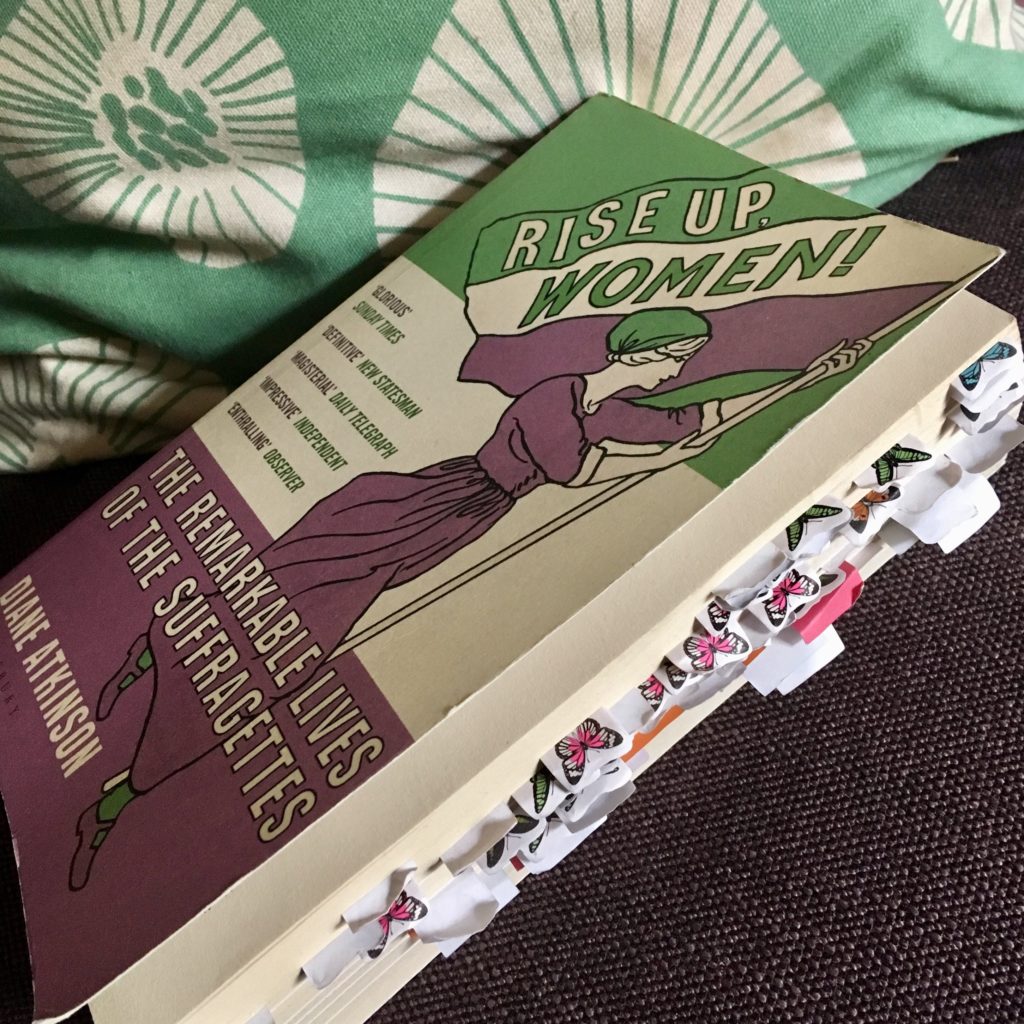We’ve taking a summer break from the Women of the Week posts. We’ll still be posting daily whenever possible on our social media channels.


Every day women have, and are, making history. Discover their stories.
We’ve taking a summer break from the Women of the Week posts. We’ll still be posting daily whenever possible on our social media channels.

Mags has written about the parallels between the Mansion House protest and early suffragette tactics for the New Statesman.
The key source for the suffragettes parts is Rise Up, Women by Diane Atkinson (Bloomsbury, 2018). Mags has been reading it steadily for months, and marking events that could become #OnThisDay facts for our social media.

She also considered including the Greenham Peace Camp, where again women using non-violent protest were violently treated.
“I didn’t include them in the end. The missiles left Greenham not because of the protests but the wider glasnost and thawing of the Cold War. I also wanted to use the statues in Parliament Square to support my point that people once seen as threatening to those in power become celebrated. The Greenham women are not as far along that journey of acceptance.”
On 25 June 1678, Elena Lucrezia Cornaro Piscopia is cross-examined in the Cathedral of the Blessed Virgin in Padua. Crowds of nobles, scholars and city officials are watching. Her answers on two Aristotelian theses impress her examiners and she is awarded the Doctorate of Philosophy degree. She is one of the first women to receive a doctorate in the world.
Continue reading “Elena Piscopia receives her doctorate: 25 June 1678”On 17 June 1943 Noor-un-nisa Inayat Khan, Diana Rowden and Cecily Lefort left for France in a small plane. All three women were trained Special Operations Executive agents setting off on their separate missions for the British against the German occupiers. None of them returned.
Continue reading “Khan, Rowden and Lefort set out for France: 17 June 1943”On 16 June 1963, Valentina Tereshkova became the first woman in space, orbiting the Earth 48 times in Vostok 6. With her flight, she clocked up more hours in space than all the preceding American manned missions combined. She remained the only woman to have flown in space for 19 years and she remains the only woman to have completed a solo space mission.
Continue reading “Valentina Tereshkova reaches orbit: 16 June 1963”On 5 June 1833, Ada Bryon attended a party at mathematician Charles Babbage’s house. She’d been presented at court a few days earlier so it was simply part of the London season. Except Babbage invited Ada to see his prototype Difference Engine. It was the start of an intellectual friendship that resulted in Ada becoming the first theoretical computer programmer.
We know machines run algorithms now, delivering customised playlists or sorting job applications. Ada was the first person to perceive the numbers to be used in calculations could also act as symbols for other systems.
Continue reading “Ada Lovelace meets Charles Babbage: 5 June 1833”On 23 May 1907 nineteen women took their seats as the Finnish Parliament met for the first time. The women were the first female Parliamentarians in the world.
By 2018 Finland ranked fourth in the world for gender parity. At the 2019 elections, 47% of the MPs elected were women.
Continue reading “Finland’s 19 female MPs take their seats: 23 May 1907”On 13 May 1995, professional British mountaineer Alison Hargreaves reached the summit of mount Everest in the Himalayas. She was the first woman – and only the second person – to summit without either support from a Sherpa team or supplementary oxygen.
Hargreaves had set her ambition out clearly and shown she was going for it: she would become the first woman to climb Everest, K2 and Kanchenjunga – the three highest mountains in the world – without oxygen.
Continue reading “Alison Hargreaves summits Everest: 13 May 1995”On 7 May 1429, Jeanne d’Arc led several charges on the besieged city of Orleans in France. She was struck by an arrow, dressed the wound and returned to the fray. The next day, the English army besieging Orleans retreated and the city was freed.
Having led the lifting the of the siege, Jeanne then led the French army as they routed the English armies and freed more cities. When Charles VII of France was crowned in Reims that summer, Jeanne d’Arc knelt at his feet.
Continue reading “Jeanne d’Arc in battle in Orleans: 7 May 1429”On 30 April 1937 almost 450,000 women in the Philippines voted for women to have the vote. With 9 out of 10 votes in favour, equal suffrage became part of the law. The plebiscite in April 1937 was the culmination of decades of activism.
Continue reading “Philippine women vote to get the vote: 30 April 1937”